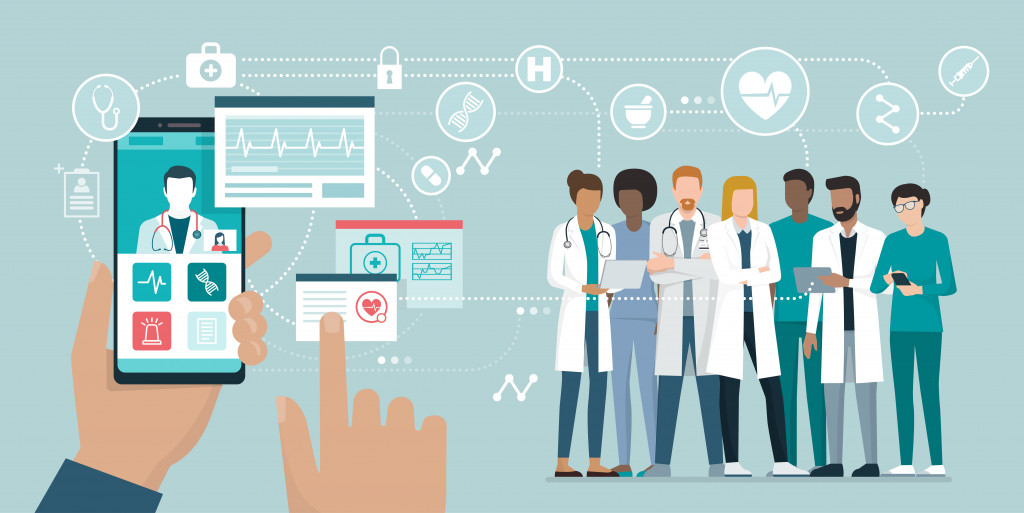Over the last decade, there has been an increase in the use of technology in healthcare. From patient portals to telemedicine, healthcare providers are using technology to improve patient outcomes.
Generally, there have been various advantages to using technology in healthcare. The first advantage is that it can help to improve communication between patients and their healthcare providers. This improved communication can lead to better treatment outcomes. For example, if a patient can easily communicate with their doctor about their symptoms, the doctor can provide more accurate and timely treatment.
That said, the healthcare industry integrates technology to provide better patient outcomes.
The rise of EHRs
Health care is one of the most rapidly changing industries, and technology plays a significant role in that change. One of the most important recent changes has been adopting electronic health records (EHRs). EHRs are digital versions of the paper charts that have long been used to track patient information. They provide a more complete and accurate picture of a patient’s health, and they offer many potential benefits for both patients and providers.
For patients, EHRs can make it easier to get the care they need by providing instant access to their medical history. For providers, EHRs can improve the quality of care by helping to identify potential problems early. In addition, EHRs can help to reduce costs by eliminating the need for duplicate tests and procedures. As more and more hospitals and clinics adopt EHRs, it is clear that they are poised to transform health care delivery.
3D printing
3d printing is primarily used in healthcare to create prosthetics, implants, and anatomical models. This technology is often used for custom devices that are not available commercially. For example, 3D-printed prosthetics can be created to fit a patient’s unique anatomy. In fact, it’s a technology that is widely used in the dental industry. It’s commonly used in complex dental treatments such as all-on-4 dental implant solutions, crowns, and many more. Dentists can use 3D printing to create custom implants that fit a patient’s mouth precisely.
This technology has also been used to create models of patients’ skulls, which can be used for surgical planning. In the future, 3D printing may be used to create organs and tissues. This could potentially revolutionize transplant medicine and make organ donation unnecessary. However, this technology is still in its early stages and has a long way to go before it can be used routinely.
Patient portals
One of the most popular ways technology is used in healthcare is through patient portals. Patient portals are secure online platforms that give patients 24/7 access to their health information. They also allow patients to communicate directly with their providers, schedule appointments and refill prescriptions.
In addition, patient portals can provide educational resources and support for patients with chronic conditions. By offering patients convenient and easy access to their health information, patient portals are empowering patients and improving communication between patients and providers.
Telemedicine
The proliferation of telemedicine has been a game-changer for the healthcare industry. With the help of technology, doctors and patients can now consult each other from anywhere in the world. This has allowed people to receive the care they need without traveling to see a doctor. Telemedicine has also improved patient outcomes by providing timely access to care. In addition, it can help to reduce healthcare costs by eliminating the need for expensive office visits. With so many benefits, it’s no surprise that telemedicine is becoming increasingly popular, and its use will likely continue to grow in the years to come.
Wearable devices

In recent years, there has been a growing trend in wearable technology in healthcare. From fitness tracking devices to smartwatches, patients use various devices to monitor their health. In addition, many hospitals and clinics are now using wearables to track patient vital signs and provide real-time alerts for potential issues. While there are still some challenges to overcome, such as data privacy and security concerns, the potential benefits of wearable technology in healthcare are significant.
By providing patients with readily accessible information and personalized care, wearables have the potential to improve health outcomes and reduce costs. As the use of wearable technology continues to grow, it will be essential to monitor its impact on the healthcare system. With the right policies and procedures in place, wearable technology has the potential to transform the way we deliver healthcare.
Final thoughts
The rapid development of technology is having a profound impact on the healthcare industry. And as years go by, patients and medical professionals will benefit from these advancements. It’s an exciting time to be involved in the healthcare industry, and there’s no doubt that the best is yet to come.

